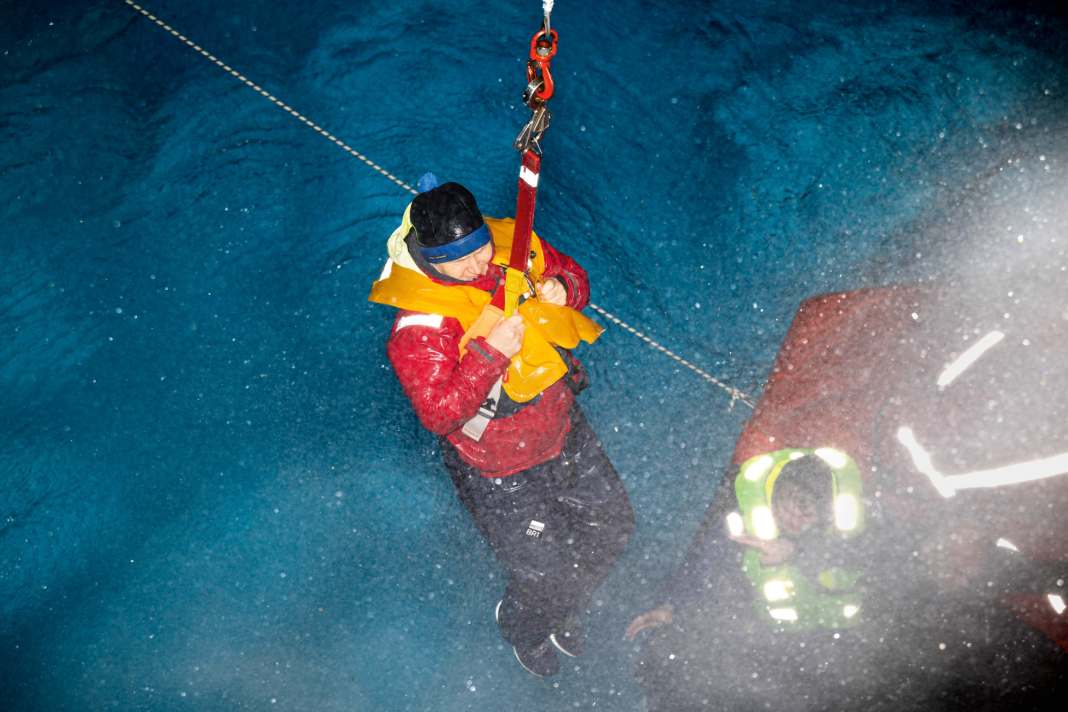





Sailing offers unrivalled freedom on the water, but also harbours risks that should not be underestimated. In order to minimise these, it is important to act as preventively as possible. Not only should all the safety equipment on board be ready for use, but the crew should also be prepared for as many scenarios as possible. We have therefore summarised the most important topics in this detailed safety special - for a successful and safe 2024 season!
The topics in this security special:
- Sea survival training for emergencies
- Stretch ropes: The correct handling of lifelines
- Lifejackets: 24 automatic lifejackets in a large comparison test (150N & 275N)
- Emergency transmitters - alerting, searching and finding, a system overview
- You should master these MOB manoeuvres!
- Back on board with tricks and professional recovery aids
- Safety check: Inspection saves lives
- Prepared for an emergency: 6 checklists for 6 scenarios
In view of the large number of potentially avoidable maritime emergencies, it is definitely worth the effort to check everything thoroughly once again: from lifelines and life jackets to strategies and aids in a man overboard horror scenario and all emergency equipment. Charter sailors should even keep a close eye on the chartered yacht before every trip and possibly purchase their own safety equipment. Especially at the start of the season, it is also worth attending training courses for emergencies at sea.
Life insurance: lifejacket, lifebelt and emergency transmitter
In addition to good weather knowledge, risk management and generally good seamanship, the right safety equipment can be crucial in difficult situations. If the lifejacket is triggered, a horror scenario for every sailor has already materialised: Man overboard! The risk can be minimised by taking preventative measures and wearing the correct leash. But there are also a few things to bear in mind when it comes to stretch ropes, lifelines and lifebelts and avoiding life-threatening mistakes.
If the lifejacket is needed, it is a matter of life and death and there is no room for compromise. We have 24 copies of the 150-Newton- and 275-Newton class tested. In addition to the detailed test results with some surprising results, we explain the differences between the two classes and explain what to look out for in lifejackets.
However, even with the best lifejacket, a person overboard is always an extremely serious emergency. If you have also experienced how quickly a person who has gone overboard gets out of sight and how difficult it is to find them again, the question of technical aids arises. We explain how the various emergency transmitters work and which systems also help to find people who have fallen overboard - everything about AIS-MOB, PBL or Epirb and co.
Man overboard: manoeuvring back onto the ship with the right aids
Once the person has been sighted or located, it's time to get down to business: the man overboard manoeuvre (MOB). Which manoeuvres are the most effective for returning the yacht as quickly and safely as possible to a fellow sailor who has gone overboard? We have tried out many different manoeuvres in practice and discovered some amazing things.
Quickly alerting the crew and locating the person who has gone overboard is one thing, getting the person back to the ship and then back on deck is quite another. Experience shows that even large crews sometimes fail to do this - often with tragic results. Rescue straps, rescue nets and emergency ladders are designed to make this easier and save lives. We have tried out professional rescue aids and systems as well as their alternatives - does the rescue work with on-board equipment?
Preparedness: rehearse for emergencies, check emergency equipment regularly
Plugging leaks, extinguishing fires, getting into the life raft: during sea survival training, sailors learn how to act correctly in an emergency at sea. A lot is demanded of them. So is it possible to prepare for an emergency after all? We got to the bottom of this and took part in such a training course!
Whether it's a fire, a leak or a fellow sailor overboard - how things end depends on the emergency equipment on board. Because in the long run, the power of the elements does not leave even the strongest equipment unscathed. Contact with salt water spray, intense UV radiation or extreme temperature changes are just some of the reasons why the maintenance intervals specified by the manufacturers of lifejackets and life rafts in particular must be meticulously adhered to. The most important tips for the safety check and maintenance of emergency equipment in one article.
One thing is clear: nobody wants to experience an emergency situation at sea. However, you are not immune and, in addition to the equipment, the crew must also be as well prepared as possible. In addition to sea survival training and independent practice, checklists for different scenarios can also be a good support in an emergency. Experienced cruising sailors report on how they prepare for a possible sea emergency.
All content in this security special:
- Sea survival training for emergencies
- Stretch ropes: The correct handling of lifelines
- Lifejackets: 24 automatic lifejackets in a large comparison test (150N & 275N)
- Emergency transmitters - alerting, searching and finding, a system overview
- You should master these MOB manoeuvres!
- Back on board with tricks and professional recovery aids
- Safety check: Inspection saves lives
- Prepared for an emergency: 6 checklists for 6 scenarios

